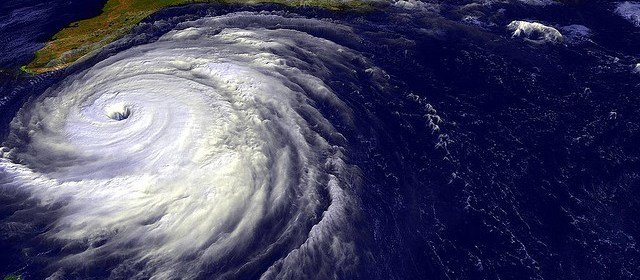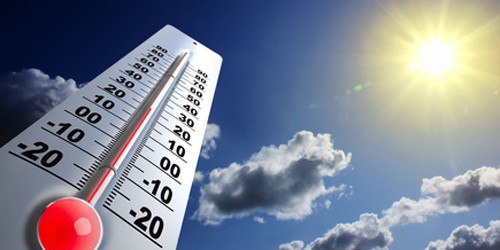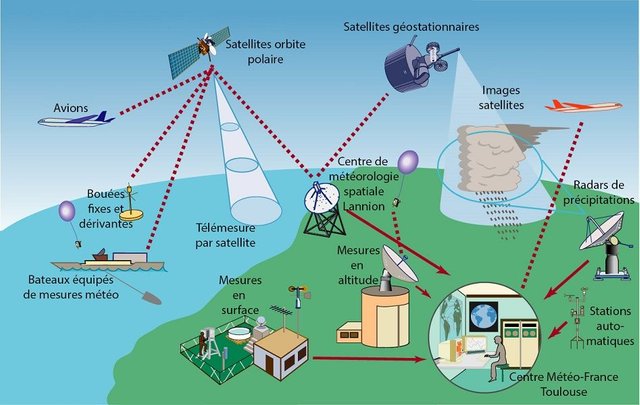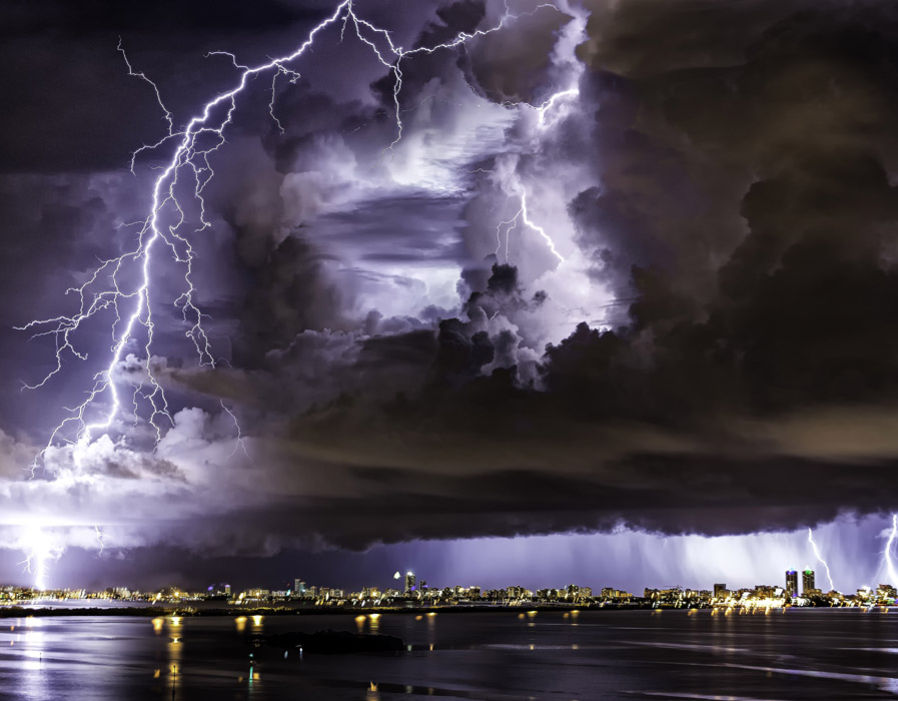Meteorology
Meteorology
Hi friends, I hope you're fine?
I just went to drive my kids to school including a disguise in Spiderman because it's carnival at school today and I felt extreme cold. I did not wear gloves and thought my hands would freeze. It's cold today, the weather has announced snow all over the country.

Meteorology is a science whose object is the study of atmospheric phenomena such as clouds, precipitation or wind in order to understand how they are formed and evolve according to measured parameters such as pressure, temperature and temperature. 'humidity.
It is a discipline that deals mainly with fluid mechanics and thermodynamics but uses various other branches of physics, chemistry and mathematics.
Modern meteorology makes it possible to predict time trends based on short and long-term mathematical models. Meteorology has applications in a wide variety of fields such as military needs, energy production, air, sea and land transport, agriculture, medicine, construction, aerial photography and cinema. It is also applied for the prediction of air quality.
The goal of meteorology is to find the laws governing the dynamics of the fluid called air and to predict its future behavior. Air is a compressible fluid, formed of different gases and lying in a thin layer on the surface of the Earth. As meteorology is a branch of physics, fluid theory, force calculation and thermodynamics are used to explain the behavior of the atmosphere.
History
The history of meteorology has three periods. Early in the ancient world, men tried to interpret the meteorological phenomena that punctuated their lives. But they only observe nature and trust their feelings.
During this period, the Chinese are the first to have a rigorous approach to weather phenomena. It is in China that the oldest meteorological observations are established as early as 1216 BC.
The term meteorology was coined by the Greek philosopher Aristotle to describe what would be called Earth Sciences in a general way, and not the exclusive domain of the study of the atmosphere. Anaximander is the first to explain meteorological phenomena by the intervention of the elements and not by divine causes.
In the fifth century, the fall of the Roman Empire, begins a second period in the history of meteorology which is part of a scientific immobility that will go until the Renaissance. The beginning of the Middle Ages is thus a period of change and reorganization that leads to the abandonment of much of the Greco-Roman knowledge on the climate. In fact, they are practically only meteorological sayings from recipes derived from ancient knowledge and observations more or less rigorous, which particularize this period where meteorology is only a pseudo-science. The Arab-Muslim world, of its side, assimilates with more insight the Greco-Roman heritage and develops, coherent knowledge until the fourteenth century.
The third period in the history of meteorology is the birth of modern meteorology and therefore the end of empiricism and sayings. The idea of making regular observations as the basis of work in meteorology returns from the fifteenth century. It is first a series of instruments that are developed as Galileo who built a thermoscope, the ancestor of the thermometer, Evangelista Torricelli who created the first artificial vacuum and used the concept to create the first barometer and Robert Hooke who rediscovered the principle anemometer to measure wind speed, an essential instrument for navigation.
Then it's the study of weather phenomena. In Europe, Blaise Pascal discovers that the pressure also decreases with altitude and deduces that there is a vacuum beyond the atmosphere and Edmund Halley maps the trade winds and deduces that the atmospheric changes are caused by the warming solar. In America, Benjamin Franklin notes that weather systems go from west to east in North America, publishes the first scientific map of the Gulf Stream, proves that lightning is an electrical phenomenon, connects volcanic eruptions and the behavior of the weather and speculates on the effects of deforestation on the climate.

At the beginning of the 19th century, more general concepts emerged. The British Luke Howard writes On the Modification of Clouds in which he gives the names we now know to the clouds from Latin. Francis Beaufort introduces his descriptive scale of winds for sailors, the Beaufort scale, which links the effects of the wind on the waves to its strength in knots. In 1835, in an article On equations of the relative motion of body systems, Gaspard-Gustave Coriolis mathematically describes the force that bears his name: the Coriolis force. This force is essential in the description of the movement of meteorological systems as Hadley had foreseen a century before.
The first networks of observations were developing. In 1654, on the advice of the Jesuit Luigi Antinori, Ferdinand II de Medici inaugurated the first meteorological network coordinated by the Meteorological Society of Florence. In 1849, the Smithsonian Institution, under the direction of physicist Joseph Henry, began to set up a network of observation weather stations in the United States. The observations will be disseminated rapidly thanks to the invention in 1837 by Samuel Morse of the telegraph.
==> https://steemit.com/communication/@lndesta120282/the-telegram
All the networks of observations mentioned so far were independent. Critical weather information could therefore not be transmitted. This was particularly important at sea. The main promoter of international exchanges will be the American Matthew Fontaine Maury. In 1853, a first conference of representatives from ten countries met in Brussels to formalize an agreement and standardize the coding of meteorological data. In 1873, the International Meteorological Organization was founded in Vienna by countries with a meteorological service.
In 1902, after more than 200 balloon releases, often carried out at night to avoid the effect of sun radiation, Leon Teisserenc de Bort discovered the troposphere, the tropopause and the stratosphere, which launched aerology applied to meteorology. In 1919, in Norway, the Bergen School, under the direction of Vilhelm Bjerknes, developed the idea of air masses meeting along discontinuity zones that were called fronts. By combining the Coriolis force, these notions and the force of pressure, they explained the generation, intensification and decline of mid-latitude weather systems. Even today, the simplified weather explanations that we see in the media use the vocabulary of the Norwegian school.
After the war, in 1951, the World Meteorological Organization was founded by the United Nations to replace the International Meteorological Organization created in 1873 for the dissemination of meteorological data.
With the arrival of computers, following the Second World War, it was the beginning of numerical weather prediction, a formulation in the form of more and more complete computer programs to solve meteorological equations.

New instruments are then developed :
• The first operational weather radars.
• In orbit of the first meteorological satellite in 1960 (TIROS-1). This marks the beginning of the collection of meteorological data from space at a resolution much higher than ground stations.
• Telecommunications by radio waves at the beginning of the 20th century, then by satellites and in the 2000s, the internet revolutionize the distribution of information.
The development of more powerful computers in the 1970s and supercomputers in the 1980s led to better resolution of NWP models. Research on the atmosphere, the oceans and their interrelationships, large-scale phenomena such as El Nino and tropical or fine-scale cyclones such as thunderstorms improve the knowledge of meteorological phenomena. It follows a better parameterization of the equations. In addition, data collection instruments have evolved considerably since 1960: automation of this collection, remote sensing and improvement of their resolution leading to more accurate surveys of the atmosphere.
More recently, the study of temperature trends and CO2 concentration has gained momentum. From the end of the 20th century, the majority of scientists have recognized the existence of global warming since the beginning of the industrial era. At the beginning of the twenty-first century, a report by international experts recognized human action as the most likely cause of such warming and predicted a continuation of it.

Wow Good post!! Thank you for sharing!
Very dangerous but beautiful pic.showing something special which is we don't know.
Thanks
Thanks for the post! Meteorology is in interesting topic for me, because it's trying to predict inherently chaotic system.
Do you think there is a possibility for future improvements and breakthroughs in this field? It seams to me that meteorology hit a plateau in its most practical task: whether prediction. Simply adding more computational power now gives diminishing returns, because the number of factors you need to consider grows exponentially in respect to time. So it's hardly possible to predict the weather with any precision month ahead, no matter what kind of computers you use.
Nice...
Just follow n upvote
Thanks for sharing a greatt information
keep it up
I wish you all the best
new and old we same same as past time and now in modern era the end is near. yes, end of world is near @lndesta120282
Very interesting and informative indeed! You have magnificently presented the history of meteorology. Thanks to the Spiderman disguise otherwise we may have missed this wonderful blog:)
Met information in the modern days is readily available on internet and other mass media. In my country Westerlies (air current) play an important part to bring rain on plains and snow over the hills in winter. In Summer season Monsoon weather system bring torrential rainfall over most part of Asia.
The Gulf Stream play a vital role to moderate weather of North Western Europe. It has four seasons largely because of the stream. You are very right Coriolis force play an important part to develop weather systems.
Whenever we go outside we should spare a couple of minutes to have a look at the recent meteorological predictions. Thank you @lndesta120282 for this quality blog as ever.
https://steemit.com/oceans/@lndesta120282/gulf-stream
I didn't know that you had already written on it. Thank you for providing link.
Weryy good pic i resteem upvoted and folowed check me out chupapic i make art abstract all the time ;)
I like the article you. be sure to follow me @elmina94. many thanks
I really like your amazing post. Very good photography photography. Incredible history.